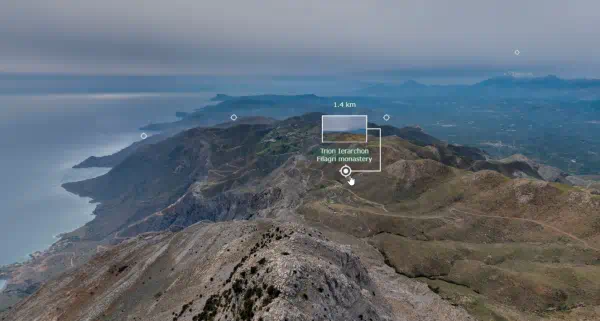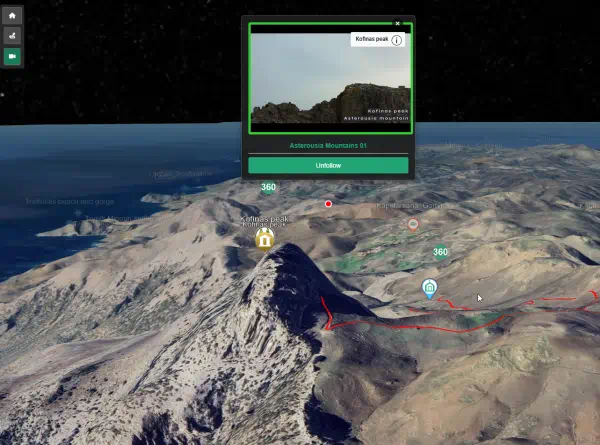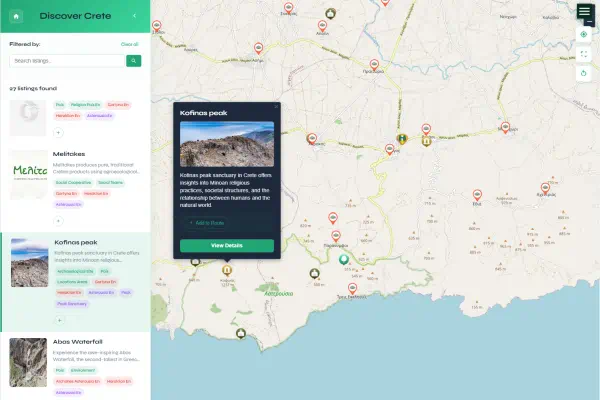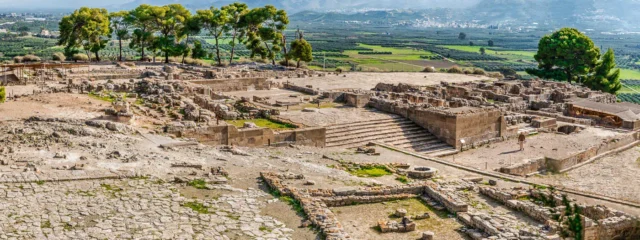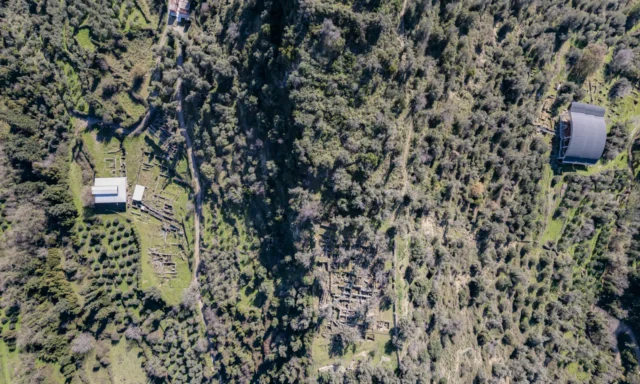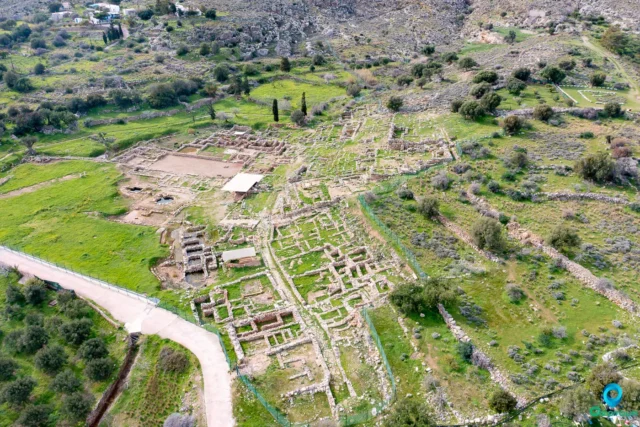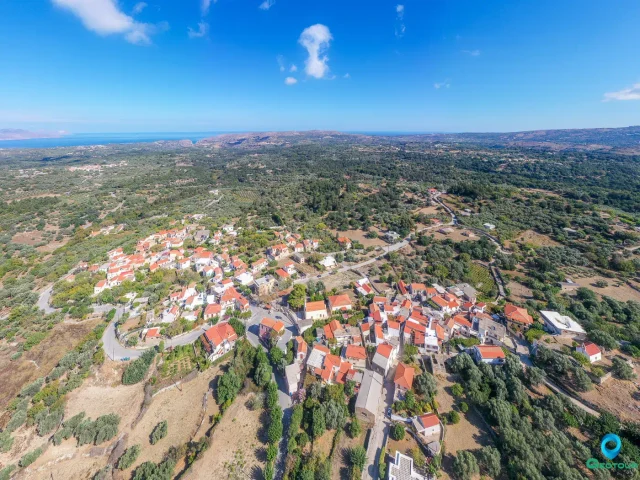Asi Gonia is a village and the administrative seat of the homonymous community within the municipality of Apokoronas in the regional unit of Chania, Crete. Over the years, it played a significant role in the various revolutionary movements of Crete during the 19th century and was the origin of several chieftains. The majority of its inhabitants are engaged in animal husbandry.
Toponymy
The name “Asi” is of Arabic or Turkish origin (Turkish: Asi) and means “rebel” or “unsubmissive.” By extension, it can also mean “brave.” Under this interpretation, Asi Gonia translates as the “Corner of the rebels, the unsubmissive, or the brave.”
Location
The settlement is built on the slopes of the White Mountains at an altitude of 400 meters in a location that is difficult to access, east of Mount Angathes. It is located 57 kilometers from the city of Chania and 35 kilometers from Rethymno. It is the smallest municipal unit by area in the municipality of Apokoronas and borders the regional unit of Rethymno to the east.
History
Due to its naturally fortified position, Asi Gonia served as a center for various Cretan revolutionary movements over the years. It was never conquered by the Turks and is first mentioned historically during the Venetian period. In more recent times, Asi Gonia was known for bloody vendettas, widespread incidents of animal theft, and the extensive participation of its inhabitants in the island’s revolutions.
In June 1867, a fierce battle was fought near the settlement between Cretan revolutionaries and the Ottoman army. On October 11 and 19, 1895, the first clashes between insurgent Cretans and the Ottoman army took place here at the start of the final Cretan Revolution of 1895-1898.
During the Second World War, the village was a significant hub for the National Resistance. Following the Allied forces’ retreat after the Battle of Crete in June 1941, it served as one of the most important junctions for escape into mountainous Crete. In the context of the 1944 abduction of General Kreipe, the abductors were informed in Asi Gonia that a ship would be waiting for them at Rodakino beach for their evacuation from the island. A resistance wireless station operated by Denis Tsiklitiras was located in the village. In May 1943, German occupation forces carried out a clearance operation in the wider area of Asi Gonia due to its importance as a resistance center.
Culture and Traditions
A major cultural and religious event in Asi Gonia is the annual livestock festival on the feast day of Agios Georgios Galatas (Saint George the Milkman). Livestock breeders in the area, who consider Saint George their patron, gather their flocks early in the morning at the village church in the square. The custom of blessing the sheep is observed annually.
Near Asi Gonia is the “Hainospelio” (Cave of the Bandits), where persecuted members of the Revolutionary Assembly of 1866 sought refuge. Architecturally, the residence of the chieftain Pavlos Gyparis is of local interest. Additionally, the composer Mikis Theodorakis wrote his first symphonic work in 1946, titled “The Festival of Asi Gonia.”
Family and Social Life
The traditions of Asi Gonia reflect a strong community ethos. A key part of the festival of Saint George is the milking of the sheep after they have been blessed. This act symbolizes the solidarity that should exist among people, and the collected milk is distributed to all who attend the celebration.
Notable People
Several individuals of note originated from the village:
- Pavlos Gyparis: Military officer.
- Georgios Psychountakis: Resistance fighter and author.
- Antonis Plymakis and Sifis I. Petrakis: Folklorists.
- Stylianos Kokkinakis: Fighter in the Macedonian Struggle.
- Michail Meladakis: Chieftain of the Northern Epirus Struggle.
- Petros Papadopetrakis (Kapetan Petrakas): Resistance fighter.
- Andreas Papadakis: Military officer and resistance fighter.
- Nikolaos Petrakis (Petronikolas) and Markos Petrakis (Petromarkos): Statues of both are located in central points of the village.
- Stylianos Petrakis: Vice Admiral and grandson of Petromarkos, who has served as the Chief of the Hellenic Navy General Staff since 2020.
Settlement: Key Points
- Location: Municipality of Apokoronas, Chania, built on the slopes of the White Mountains at an altitude of 400 meters.
- Historical Significance: A center for Cretan revolutions, never occupied by the Ottomans. It was an important hub for the National Resistance during WWII, playing a role in the Allied escape and the abduction of General Kreipe.
- Primary Economy: The local economy is primarily based on livestock farming.
- Cultural Event: The village is known for the annual festival of Agios Georgios Galatas, which involves the blessing and public milking of sheep.
- Population Data:
Year | Population | Notes |
1583 | ||
1881 | 476 | 476 Christians |
1900 | 517 | |
1913 | 569 | |
1920 | 521 | |
1928 | 506 | |
1940 | 614 | |
1951 | 593 | |
1961 | 662 | |
1971 | 585 | |
1981 | 508 | |
1991 | 526 | |
2001 | 586 | |
2011 | 527 | |
2021 | 456 |

